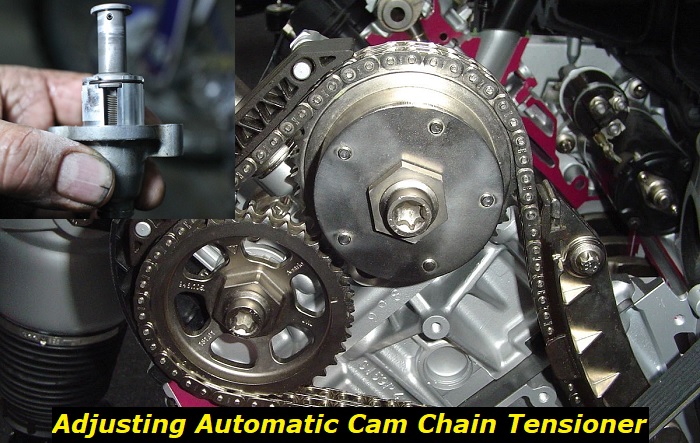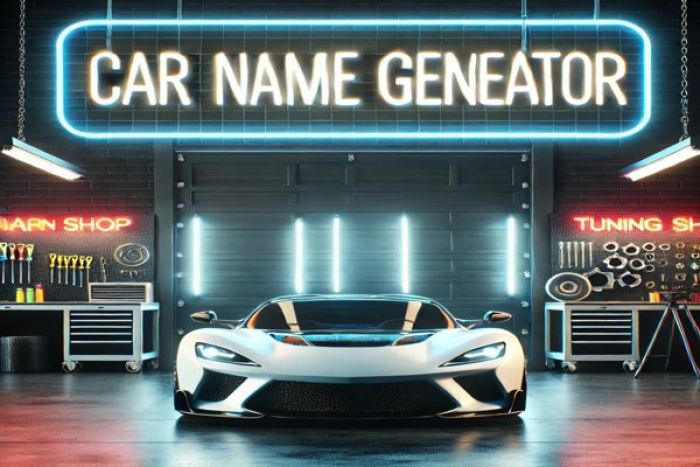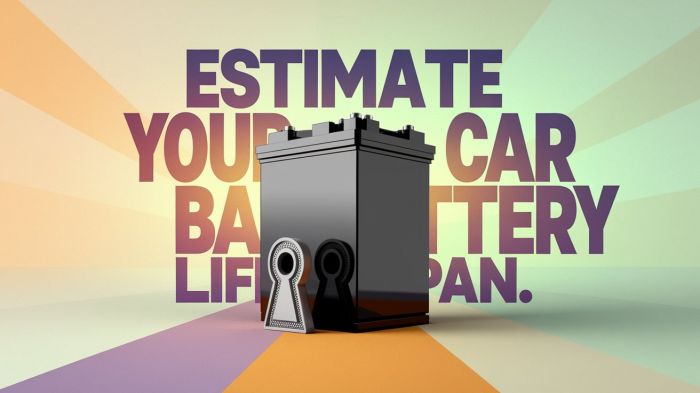The cam chain system of an engine is crucial for the proper running of a vehicle or motorcycle. A cam chain is found in a piston engine and is responsible for the synchronized movement of the camshaft and the crankshaft. The system comprises several components: cam chain tensioners, sprockets, cam phaser, and sliding rail.
Engine repair mistakes highlights
- Level of importance:extremely important
- When done:DIY repairs or diagnostics
- Cost of mistake:$250 - $4,000
- How to avoid:professional inspections, getting help from mechanics
- Consequences:broken engine, need for engine replacement
- DIY solutions:not many

What is a cam chain tensioner?
A cam chain is attached to sprockets with gears, ensuring the crankshaft and the camshaft operate harmoniously. The cam chain tensioners ensure that the chain moves at the recommended speed. By controlling the chain's speed, the camshaft and the crankshaft rotate in perfect synchronization, thanks to the cam chain tensioners.
A cam chain tensioner is a component located along the cam chain, and it applies pressure on the chain, making it either tight or loose. The tensioner ensures the correct pressure is applied on the cam chain to make the camshaft and the crankshaft operate harmoniously.
A tensioner is attached to the engine block and applies pressure to the cam chain, making it possible to control the chain's tension. A tensioner should have a pulley, arm, and spring, which allow it to perform optimally. If the cam chain tensioner moves out of position, the valves and the pistons will be inefficient in their performance, making the engine's efficiency drop.
What symptoms does a malfunctioning cam chain tensioner have?
Cam chain tensioners do get damaged though it's not very common. Over time, the chain and the tensioners will wear out, leading to the tensioners working imperfectly. In almost all instances, the malfunctioning of the tensioners will not happen abruptly. It will take weeks or months, and picking up the telltale signs left by a failing tensioner will be easy.
Here are the symptoms to look out for:
- Engine misfire
Engine misfire is caused by the fuel/air mixture not burning up properly in the combustion chamber. Engine misfires can be caused by a number of reasons, among them a bad cam chain tensioner. As described above, the tensioner ensures that the camshaft and the crankshaft open at the right time.
The synchronized opening and closing of the camshaft and crankshaft means the valves and the pistons work harmoniously. The timely opening of the valve means the fuel/air mixture enters the combustion chamber when the piston is well primed. If the opening and closing of the valve and the piston aren't matched, then there will be instances when the fuel/air mixture will fail to burn.
- Check engine light (CEL)
Another symptom that pops up because of a bad tensioner is the check engine light. The light will illuminate because the engine will experience all manner of issues, from misfiring, valve and piston not working in synchronization, and the cam chain malfunctioning. An OBD II device should help you pinpoint where the issue is.
- Noisy engine
You might notice the engine is noisy when driving or when idling. This is because the cam chain is loose, and it may be hitting or touching some engine components. You may hear squeaking sounds too.
- Engine failure
Well, this happens in extreme cases. The chaotic opening and closing of the camshaft and crankshaft of the engine mean the engine will start underperforming. If this is allowed to continue, the engine deteriorates in time. Instead of just dealing with how to adjust the tensioner, you might end up replacing the entire engine if you ignore the obvious symptoms.
- Problems starting the vehicle
This is one of the main symptoms that a bad tensioner gives. This happens when you turn the ignition key, but rather than the engine coming to life, nothing happens, yet the motor is on. Because there is no proper connection between the engine components, namely the camshaft and the crankshaft, starting the engine becomes very difficult. This will happen because the chain is loose.
Checking the cam chain tensioner
The cam chain tensioner is usually located deep under the hood and accessing it, or its components involve quite some work. It is prudent first to confirm that it is indeed the tensioner that is faulty.
Because you don't want to unfasten all manner of components trying to reach the tensioners, you should first check and confirm that, indeed, the tensioner is bad. Here are a few steps to follow;
Start with switching the engine off. Let the engine cool completely before venturing under the hood. When you pop up the hood, you will find the chain system on the passenger side if the vehicle is left-hand drive. Please take a picture of the chain system before you start working on it. This helps to ensure that you can reassemble everything afterward.
Adjusting cam chain tensioner
The cam chain tensioner should be adjusted every time it is replaced, refitted, or when the cylinder head has been worked on. But the car's handbook provides a scheduled interval at which you should service the tension of the toothed chain. As most experienced drivers and mechanics know, a wrongly adjusted cam chain tensioner could lead to noise and swift wear of the cam chain.
Adjusting the tensioner is different for different car makes and models
- Ford
In Ford vehicles, adjusting the tensioner requires you to slacken two bolts. One bolt is a pivot spring bolt, and the other is a locking bolt. Start by slackening the locking bolt, followed by the pivot spring, which requires you to have a splined tool.
Remember the ignition should be off and the battery disconnected when working on the cam tensioner. Go ahead and do two complete clockwise turns on the crankshaft pulley. This evens out the tension in the cam chain. Go ahead and tighten the locking belt before using the splined tool, used in combination with a torque wrench, to tighten the pivot spring bolt. Tightening the pivot bolt requires you to confer with the car service manual because the torque setting is particular.
- Vauxhall and VW
In VW, Vauxhall, and other vehicles with similar engines whose tensioners don't have an automatic spring, you test the tension of the cam chain by twisting it with your forefinger and thumb. This is done in between the two primary sprockets. The twist angle should be 90 degrees if the tension is correct.
If you can twist the cam chain for less or more than 90 degrees, you should manually adjust the tensioner accordingly. Adjusting the tensioner is done by slackening the nut located in the tensioning assembly slot. By sliding the tensioner clockwise, you are increasing the tension, and going anticlockwise; you are reducing it. You should check the tension of the cam chain again and confirm if the tension has been adjusted accordingly.
- Leyland and similar engines
Like the VW and the Vauxhall, the Leyland vehicles don't have an automatic spring for the cam chain tensioner. The cam chain tension is measured using a spring balance capable of weighing at least 6 kilograms. The spring balance should have its hook adjusted into an L shape to fit flat on the belt.
The hook is placed between the crankshaft and the camshaft sprockets where the intake hose stub for the water pump is located. Pull the spring until the belt's edge aligns with the water pump's intake hose stub. The spring balance should give a reading of 5 kg or 11 lbs for an old belt. A new belt should give a 13-pound or 6-kg reading.
To tensioner in the Leyland engine is located on the outside face. There are two adjustment belts, and to adjust the tensioner, slacken both bolts just enough to allow you to slide it. Move the tensioner accordingly to let you achieve the required readings from the spring balance. Tighten the bolts when the readings are right, and then confirm the readings afterward.
Conclusion
The cam chain tensioner has to be adjusted right if the cam chain is to coordinate the functioning of the camshaft and the crankshaft properly. To the newbie's eye, the tensioner can seem to be nothing more than a metallic protrusion from the engine, but it plays a crucial role in the optimal operation of the engine.
It is worth noting that as the cam chain ages or wears out, the tension of the cam chain deteriorates. You should adjust the tensioner to capture this cam chain change. As stated earlier, the different types of engines out there have varying ways of adjusting their automatic cam chain tensioners. Adjusting a cam chain tensioner with the proper expertise and tools is inexpensive.
About the authors
The CarAraC research team is composed of seasoned auto mechanics and automotive industry professionals, including individuals with advanced degrees and certifications in their field. Our team members boast prestigious credentials, reflecting their extensive knowledge and skills. These qualifications include: IMI: Institute of the Motor Industry, ASE-Certified Master Automobile Technicians; Coventry University, Graduate of MA in Automotive Journalism; Politecnico di Torino, Italy, MS Automotive Engineering; Ss. Cyril and Methodius University in Skopje, Mechanical University in Skopje; TOC Automotive College; DHA Suffa University, Department of Mechanical Engineering






Add comment